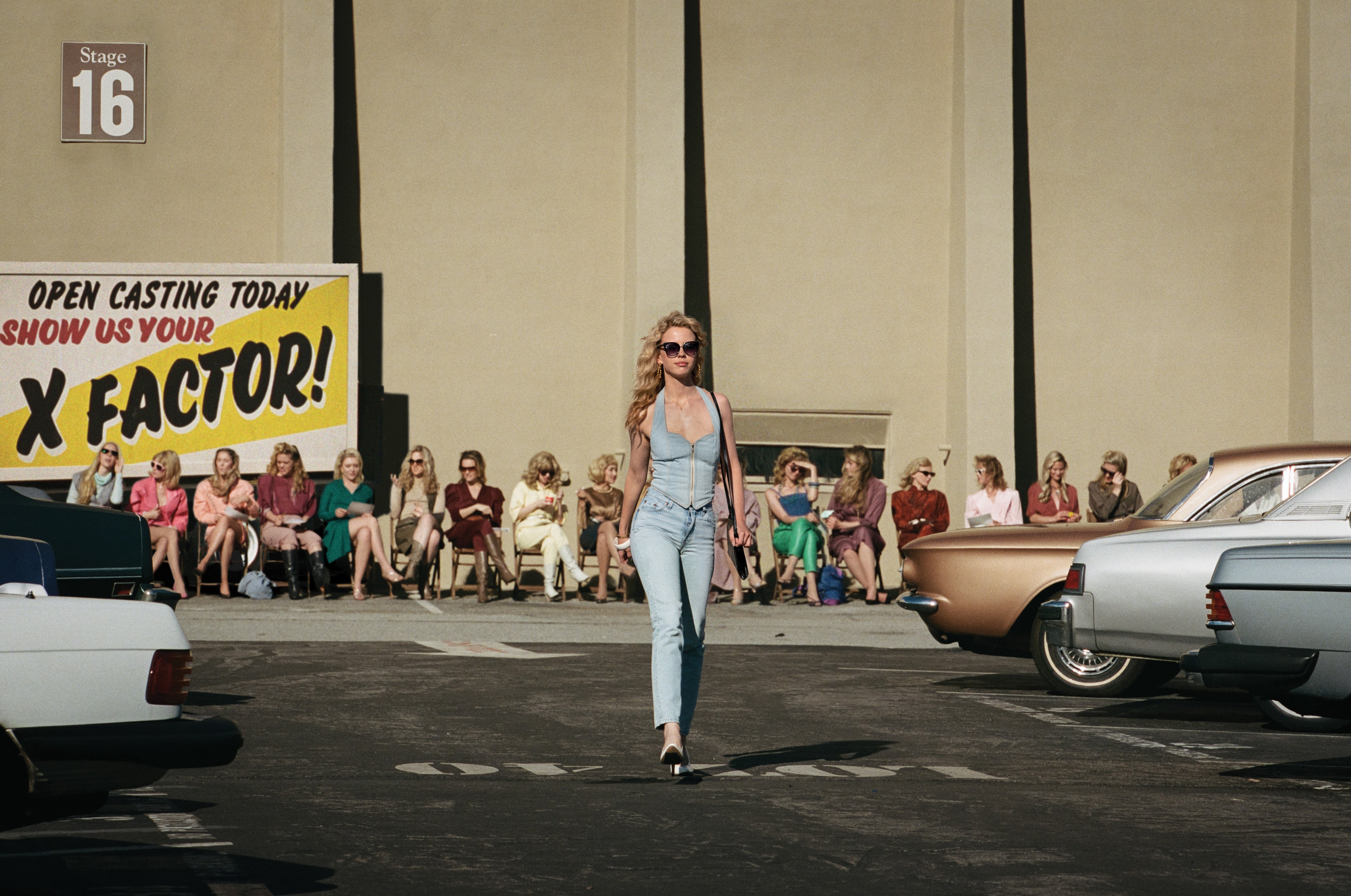
MaXXXine: Painting Tinseltown Red
Cinematographer Eliot Rockett and director Ti West bring bold color and retro aesthetics to the third entry in their horror saga.
This excerpt is from the full story that appears in the August 2024 issue of American Cinematographer magazine.
For MaXXXine — the latest installment of the horror-movie series that began in 2022 with X and Pearl — cinematographer Eliot Rockett and director Ti West sought to channel the spirit of 1980s filmmaking and Italian giallo. “Ti and I share a sense of what makes interesting cinema,” says Rockett, who has shot six features for West since the pair first began working together 15 years ago. “It’s easy for us to agree on an aesthetic approach and say, ‘This is the world we want to be looking into, and this is the world we want to reference and emulate.’”
MaXXXine finds the titular character, Maxine Minx (Mia Goth), struggling to break away from a career in porn and land legitimate acting jobs in Los Angeles. Whereas X took place in the 1970s and Pearl in 1918, the action in MaXXXine is set in 1985, and there is plenty of it: As Maxine appears to get her big break on a horror movie (The Puritan 2), a serial killer is targeting young starlets, including some of Maxine’s associates. Three people are soon hot on her trail: a shady private eye (Kevin Bacon) working for a mysterious client, and police detectives Williams (Michelle Monaghan) and Torres (Bobby Cannavale), who believe she can help them apprehend the killer.
Giallo filmmakers’ framing and use of saturated color and hard light were touchstones, as were films such as Angel (shot by Andrew Davis), Vice Squad (John Alcott, BSC), Hardcore (Michael Chapman, ASC) and Dressed to Kill (Ralf D. Bode, ASC). Rockett notes that films like those “were helpful in setting an overall stylistic tone, whereas the giallo films inspired more specific details, like the splashes of colored light, the use of wide lenses and the pretty extreme lighting contrast. All of the references we looked at helped build a consistent aesthetic that kept things on track, to make a movie that felt like a product of that particular time.
To make MaXXXine look like it was shot on 1980s film negative, West and Rockett relied heavily on Company 3 senior colorist and ASC associate Tom Poole, who conferred with them several times to view and discuss reference stills in prep. “We did a bunch of testing, and because there are such strong looks [in the movie], we couldn’t do just one show LUT,” says Poole. “I had to create different LUTs for different situations; there was a slightly cleaner print [film look], a nighttime one, and one for warmer light. We also created an effects layer with some vignetting and softness. Then, in the finishing, we added grain and halation to make it look even more authentic.”
The desire to achieve an ’80s look extended to Rockett’s lighting approach — and, to some extent, to the lights themselves. “For X, I almost exclusively used period-correct lighting fixtures; with MaXXXine, I wasn’t as strict about it, but I made a conscious effort to not do things the way they’re typically done today,” the cinematographer says. “We used a lot of harder light and fixtures such as tungsten Fresnels. The lighting was inclined to a style that was period-accurate.


Rockett shot MaXXXine with Sony’s Venice 2, cropping to 5.4K and then matting the image to 2.39:1. “I shot the entire thing at 3,200 ISO, which is what I’ve been doing lately on pretty much everything,” he says. “I find the contrast on the Venice at 3,200 much more appealing than the lower base ISO, as well as the slightly less clean and crisp image that occurs due to the minor digital noise that is introduced at that ASA.”
He chose the same lenses he’d used on X and Pearl — Hawk MiniHawk Hybrid Anamorphic primes — and favored the 35mm and 40mm focal lengths. “The MiniHawks are not as crisp as, say, Arri Ultra Primes, and they have pleasing anamorphic qualities: the oval bokeh and a little horizontal flaring,” Rockett observes. “They fall off nicely in the out-of-focus areas, but not too abruptly. I would load the internal 2.4 ND filter and add more glass ND on the outside so I could shoot outdoors in the middle of the day at T2. All of that worked against the inherently digital qualities [of the image]. Sensors and cameras these days have become so technically ‘perfect’ that you have to make a real effort to inject some sort of character into the image. I think that’s at the heart of why a lot of people are obsessing over different lenses — vintage lenses, ‘de-tuned’ lenses, etc. Lens choice is a very direct way to give unique character to the pictures when the cameras all seem to want to create a sort of cookie-cutter image.”

You’ll find our complete story in our August 2024 issue. Subscribers can finish this story now by logging in to our digital edition. Not a subscriber yet? Do it today.







